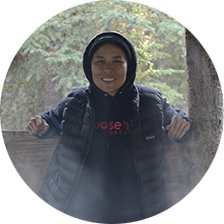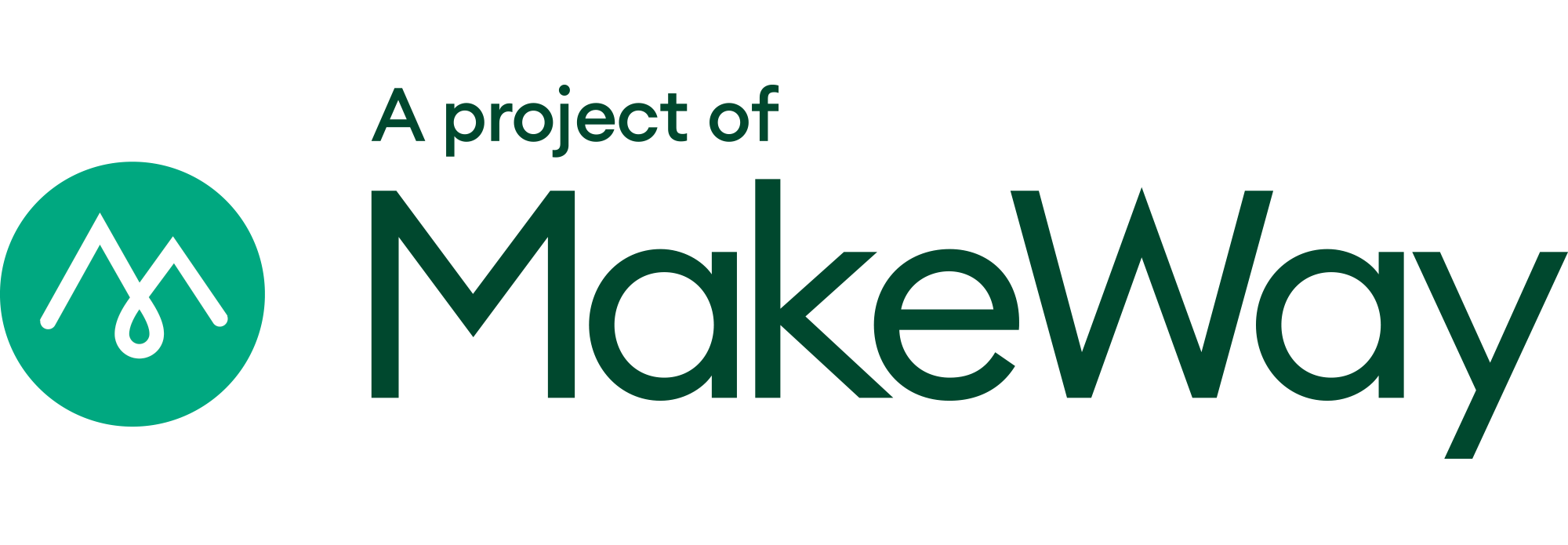Since time immemorial, Indigenous people have been master crafters of hand-made designs that blend exceptional function with wearable art. As consumers across the globe are recognizing the environmental impacts of fast fashion and the dangers of cultural appropriation, Indigenous designers are offering unique, sought-after alternatives that hold integrity, meaning and power. It's clear that there is a growing market for Indigenous-made garments, jewellery and accessories. Through social media and initiatives like IFWTO, Adäka and GNAF, Indigenous designers are showcasing and selling their works to large, conscious audiences who are ready to invest and learn.
Our Circumpolar Fashion Cohort will take 12 Indigenous entrepreneurs through a professional and personal growth journey that will enable them to grow the business side of their design work; with a focus on leadership, marketing, operations, and finance. In short, it is an opportunity for each entrepreneur to build a thriving, sustainable fashion business that has a positive community impact and the potential to elevate the global fashion market.
Our Circumpolar Fashion Cohort will take 12 Indigenous entrepreneurs through a professional and personal growth journey that will enable them to grow the business side of their design work; with a focus on leadership, marketing, operations, and finance. In short, it is an opportunity for each entrepreneur to build a thriving, sustainable fashion business that has a positive community impact and the potential to elevate the global fashion market.
Nunavut
May Ningeongan
|
May Ningeongan is an Inuk fashion designer from Salliq (Coral Harbour), Nunavut. By day, May works at the Hamlet of Coral Harbour as a Wellness Coordinator. When she is not delivering wellness programs for members of her community, May can often be found sewing. Sewing has a long history among Inuit; the tools and techniques have been passed from one generation to the next. May is committed to keeping Inuit sewing traditions alive through the design and production of garments that marry the traditional with the modern. May specializes in the creation of sealskin and leather garments, including parkas, dresses, atigi (special occasion shirts), vests, blazers, and kamiit (traditional Inuit boots).
Along with her mother, Elizabeth Ningeongan, an accomplished and well-known seamstress, May owns and operates Ujaraatsiaq’s Garments, an upscale fashion boutique. Ujaraatsiaq is May’s Inuktitut name; she was named after her grandmother, Annie Eetuk. In December 2019, the launch of the Ujaraatsiaq’s Garments Facebook page caught the attention of the Royal Bank of Canada, which has committed to assisting May and Elizabeth with promotional efforts. |
Melissa Attagutsiak
|
Melissa Attagutsiak was born in St. John’s, Newfoundland, and raised in Iqaluit, Nunavut. Melissa is a multi-media artist and the owner of Nuvuja9, a fashion label that specializes in custom garments, ready-to-wear outfits, accessories, and jewellery. Nuvuja is Inuktitut for cloud and Melissa aims to make clients feel like they’re on cloud nine when they wear her designs. Melissa has had the opportunity to share her designs, which feature traditional materials like sealskin on modern-styled gowns, tops, and jackets, at fashion and tradeshows across Canada, as well as in Norway and Scotland. Her favourite exhibition, to date, was the Indigenous Fashion Week showcase, which was held beneath the iconic Eiffel Tower during Paris Fashion Week in 2019. Melissa has also participated in collaborative art projects like Sivuniksattinu, a traditional qajaq frame fitted with fused glass panels featuring scenes of Inuit life and history that is on permanent display at The Ottawa Hospital. Melissa recently enrolled in Nunavut Arctic College’s renowned jewellery and metalwork program. This program will allow Melissa to add metalwork skills to her experience of working with sealskin, caribou antler, baleen, beads, and ivory.
|
Lavinia Van Heuvelen
|
Lavinia van Heuvelen is an emerging Inuk jeweller, born and raised in Bowmanville, Ontario. Lavinia moved to Iqaluit after high school, where she studied jewellery and metalwork at Nunavut Arctic College. Following graduation, she worked full-time as a jeweller at LVH Jewellery. After being employed by Nunavut Arctic College for a few years, Lavinia recently made the decision to return to a full-time career as a jeweller. A member of Aayuraa Studios in Iqaluit, Lavinia has been able to learn and grow as an artist as she works alongside her mentors, peers, and studio mates.
Lavinia has experience with a variety of mediums, though she has long focused on her jewellery practice because it allows her to experiment with new techniques and projects. Lavinia works primarily with sterling silver and natural materials gifted by or purchased from local hunters. Her designs are inspired by the North and the people and landscapes that surround her. Much of her jewellery directly references traditional Inuit themes and imagery, which are tied together with silver and materials from the land. Though still early in her career, Lavinia has already won many awards for her designs and has travelled around Canada and overseas. Lavinia’s work can be purchased at galleries across the country. |
Papatsi Anrango Kotierk
|
Papatsi's passion for designing and creating wearable fashion suitable for the Arctic climate emerged at a young age. Papatsi learned basic garment construction by hand sewing clothing for her dolls, completing her first amauti (an Inuit women’s baby-carrying parka) with a sewing machine at the age of ten. She has been creating garments ever since. In 2019, Papatsi completed a BA in Indigenous Studies at Trent University, before moving to Sisimiut, Greenland, to study at Knud Rasmussen Højskolia. She is currently a student in Aurniarvik, the Inuktitut Second Language Program for Inuit at Pirurvik Center in Iqaluit, Nunavut, where she is fulfilling her lifelong goal of learning her mother tongue.
Papatsi by Papatsi is committed to culture and continuity. Many Inuit women are master seamstresses because the lives of their ancestors depended on this vital skill for survival in the Arctic. Papatsi by Papatsi, which is rooted in Papatsi’s love for fashion, her Inuit culture, and community, celebrates Inuit as champions of Arctic fashion. Papatsi garments are thoughtfully designed and meticulously produced one-of-a-kind pieces made from sealskin, fur, and modern materials. In addition to being a full-time student and part-time seamstress, Papatsi is a mother to Angutitaasaaq. Her four-year-old son motivates her to lead by example and follow her dreams, including her dream of becoming a woman in business. |
Nicole Camphaug
|
Nicole Camphaug is the Owner of ENB Artisan and belongs to a generation of Inuit artists transforming the seal product industry in Nunavut. As a young child, Nicole learned to sew from her mother and aunt, who sewed for their families, and her grandmother, who beaded and made eiderdown clothing. In addition to laying an important technical foundation for Nicole’s future designs, these talented Inuit seamstresses modelled the importance of attention to detail and continuous learning, attributes Nicole continues to apply to her creative work.
Nicole has a wide variety of skills in the arts that enable her to use traditional designs and materials in the creation of modern, sophisticated products. Nicole hand-makes parkas, sealskin mitts, hats and a variety of other crafts. She (along with her husband) designs and makes exquisite traditional and contemporary ivory, muskox boss, and caribou antler jewellery. Nicole is perhaps best known, however, for her line of sealskin footwear, which includes flats, boots, men’s shoes and stilettos. The success of this line, which demonstrates Nicole’s ability to offer a sophisticated and modern take on traditional designs, is also evidence of her business savvy. Hailing originally from Rankin Inlet, Nicole now lives and works in Iqaluit. Her husband, Edgardo, is also her creative design partner. They have one child, a daughter named Barree. Nicole speaks Inuktitut and English, and she has competencies in French and Spanish. |
Northwest Territories
Elizabeth Arey
|
Elizabeth Arey is Inuvialuk from the coastal community of Tuktoyaktuk, Northwest Territories. Elizabeth was taught to bead and sew by her mother, who learned from her mother, the well-known Inuvialuk seamstress, Alice Gruben. Elizabeth’s technical skills have also benefitted from working alongside other talented artists.
Through Arctic Ocean Mocs, Elizabeth offers clients warm, cozy, and stylish slippers with intricately beaded uppers. Made from locally sourced sealskin, fox, and beaver, Elizabeth’s moccasins are based on a slipper pattern she inherited from her grandmother. Elizabeth’s beadwork, which features ice, snow, and flowers, is inspired by the beauty and bounty of nuna (the land). Her intricate beadwork is constantly evolving and always unique. In addition to creating beautiful moccasins, Elizabeth is also keeping sewing traditions alive in her community by sharing her skills with the younger generation. |
Dorathy Wright
|
Dorathy Wright is a Gwich’in quilter and artist from Inuvik, Northwest Territories, who now calls Norman Wells home. Dorathy comes from a family of artists, though she is largely self-taught. While she learned traditional beading and embroidery in junior high and high school, Dorathy came to quilting as an adult. With the help of some how-to videos, she picked up the skill easily. She has since taken classes on specific quilt patterns, including watercolour rails and double pinwheel.
Dorathy’s work, which celebrates colour, line, and texture, seeks to captivate the spirit and emotions of the viewer, sparking a sense of mystery, excitement, and joy. She aspires to be a contemporary dressmaker and hopes to one day open a craft store to display her textile work and provide materials and designs to the communities of the Sahtú. With over ten years of experience as a quilter and artist, Dorathy has been selling and donating quilts for over five years. Recipients of her work include the Norman Wells Land Corporation, Mackenzie Mountain School, the NWT SPCA, the East Three Girls Basketball Team, as well as many local families. Dorathy is committed to continuing to support, educate, and donate to her local community in the hopes that her crafting skills can encourage other young artists to engage in healthy and productive hobbies. |
Erica Lugt
|
Erica Lugt is an Inuvialuk artist from Tuktoyaktuk, Northwest Territories, though she is now based in Inuvik. Erica makes jewellery inspired by the land and her Inuvialuit culture, in particular Inuvialuit dancing parkas, as well as the colours of the land: “I’ve always been attracted to colour. I bring my love of colour, of all colours, to my creations.” Erica also has a passion and pedigree for fashion; she comes from a long line of well-known Gruben seamstresses. Erica is committed to creating wearable fashion that is at once traditional and modern. Jewellery and fashion design are more than creative outlets for Erica. They have also been an important part of her healing journey. Erica sees opportunities for collective healing and the making of a better future through fashion as well.
Erica’s jewellery and garments are available through her brand, She Was A Free Spirit. Erica was a featured vendor at Indigenous Fashion Week in Toronto in 2018 and her earrings were on display at Paris Fashion Week in 2019. Erica co-coordinated the 2019 Arctic Fashion Show as part of the Great Northern Arts Festival in Inuvik. She is also a member of the Creations For Continuity Collective. |
Yukon
Brenda Asp
|
Brenda is Northern Tutchone from central Yukon and Tahltan from northern British Columbia. Born and raised in the Yukon, she is Crow Clan and the proud mother of three boys. From a young age Brenda spent time watching, learning, and working alongside her mother, grandmother, and aunts. From this circle of talented artisans she learned about different sewing techniques, the precise use of traditional and contemporary materials, the value of patterns, and the use of shapes and colour. Inspired by her mentors, Brenda attended the Blanche MacDonald Centre in Vancouver. She graduated with a diploma in Fashion Design in 2010.
Following the teachings and practices of her ancestors, Brenda’s creative endeavours include garment creation, leatherwork, print design, jewellery, and beadwork. Her hand-crafted jewellery features porcupine quills, moose skin, feathers, birchbark, and a variety of metals and semi-precious gemstones including moonstone, abalone, malachite, and tourmaline. Brenda has toured North America, displaying her designs at various art festivals and fashion shows including Couture Fashion Week in Manhattan and Western Canadian Fashion Week in Edmonton. She most recently participated in the IFWTO and Dene Nahjo Artist Markets. |
Robyn McLeod
|
Born in Yellowknife, Northwest Territories, Robyn McLeod is of Dene, Métis, and Scottish descent and a member of the Deh Gáh Got’ı̨ę First Nation in the Dehcho region of the NWT. A full-time artist, Robyn works across a wide variety of mediums, including fashion design, traditional Dene art, digital art, moosehide tanning, and mixed media. Robyn has studied fashion at the Blanche Macdonald Centre and Visual Art at SOVA (the Yukon School of Visual Art). In 2019, Robyn was named the Yukon winner of the BMO 1st Art! Competition for her mixed-media piece, Dene Futurisms.
With her sister, Shawna McLeod, Robyn is the co-founder of From the Land Creations. Together, the McLeod sisters create jewellery and art from materials that are sustainably harvested by hunters, trappers, or by Robyn and Shawna themselves. Whether designing garments, creating digital art, or beading, Robyn draws inspiration from her family and culture. Her work is also informed by the resourcefulness and sustainability she learned growing up and living in the North. Robyn currently resides on unceded Kaska territory in the Yukon, where she spends as much time as she can in the mountains or on the river harvesting food and water with her partner. |
Kaylyn Baker
|
Kaylyn Baker is a proud Northern Tutchone and Tlingit woman from the Yukon. A member of the Raven Clan and a citizen of Selkirk First Nation, Kaylyn now calls Whitehorse home. Kaylyn developed an early interest in the visual arts including painting, photography, and pottery. When her mother, Charlene Baker, was a student at Emily Carr University and the University of Alaska Southeast, Kaylyn attended classes with her and occasionally participated. These experiences enriched her understanding of different visual art mediums. Today, Kaylyn is an avid beader, using a variety of materials and textiles, and drawing on the principals of visual art to create her own designs. In addition to making jewellery, Kaylyn’s beadwork adorns garments and accessories, including mukluks, moccasins, and purses.
Beading allows Kaylyn to connect with her ancestors—her mother, grandmothers, and great grandmothers all beaded—as well as with her peers and her children. Beading is a form of storytelling, a way to pass along traditions and knowledge to future generations. In addition to showing her kids the good things that come from following their dreams, Kaylyn hopes through her beadwork and sharing her sewing skills to inspire other Indigenous people who may have lost touch with their traditions as a result of residential school. |
Vashti Etzel
|
Vashti Etzel is a Shuhta/Kaska Dene woman and a member of the Wolf Clan. Born in Fort Smith, NWT, Vashti spent her childhood in Ross River, Yukon. Raised in part by her grandparents, Vashti grew up on the land and was immersed in stories passed down by her family. At sixteen, she dreamed of becoming a well-known artist, but she also had an interest in earth science. After graduating from high school, Vashti attended Mount Royal University with the intention of starting a business that would create on-the-land jobs for her people. The birth of her first child renewed her passion for art and inspired her to continue her late grandmother’s legacy in traditional crafts. A self-taught artist, Vashti draws creative inspiration from her grandmother, her Dene roots, and the land, and is motivated by a desire to preserve her Indigenous heritage and culture.
In 2016, Vashti shared a beaded poppy she’d made on social media and it got picked up by CBC. The orders for poppies and custom moccasins that followed led to the creation of Golden Eye Designs. Vashti also makes jewellery that features materials from the land. One of Vashti’s pieces, a pair of exquisitely beaded gauntlets, is part of the Yukon Permanent Art Collection. She was also commissioned to design and produce a custom sash for the Chancellor of Yukon University. |












